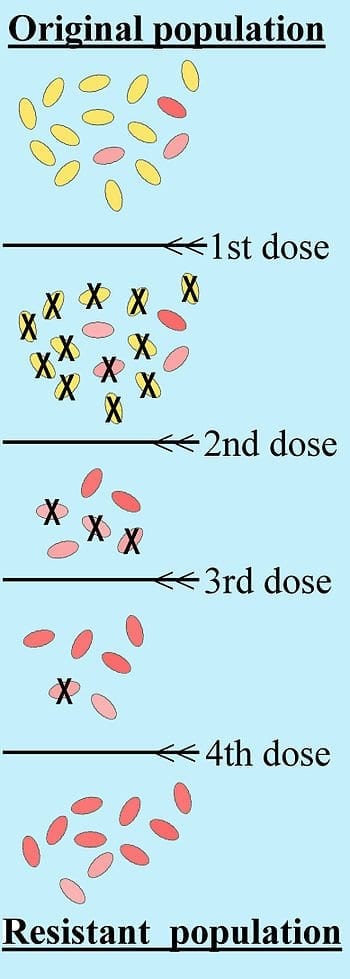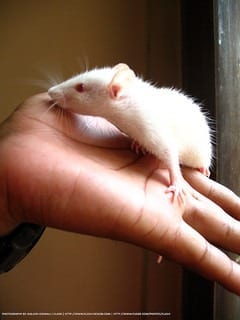
A first-ever World Health Organization assessment of the growing problem calls for rapid changes to avoid the misery and deaths of a potential “post-antibiotic era”
Dangerous antibiotic-resistant bacteria and other pathogens have now emerged in every part of the world and threaten to roll back a century of medical advances. That’s the message from the World Health Organization in its first global report on this growing problem, which draws on drug-resistance data in 114 countries.
“A post antibiotic-era—in which common infections and minor injuries can kill—far from being an apocalyptic fantasy, is instead a very real possibility for the 21st century,” wrote Keiji Fukuda, WHO’s assistant director general for Health Security, in an introduction to the report. The crisis is the fruit of several decades of overreliance on the drugs and careless prescribing practices as well as routine use of the medicines in the rearing of livestock, the report noted.
Antibiotic resistance is putting patients in peril in both developing and developed countries, as bacteria responsible for an array of dangerous infections evolve resistance to the drugs that once vanquished them.
Gonorrhea, once well treated by antibiotics, is once again a major public health threat due to the emergence of new, resistant strains. Drugs that were once a last resort treatment for the sexually transmitted disease—which can lead to infertility, blindness and increased odds of HIV transmission if left untreated—are now the first-line treatment and are sometimes ineffective among patients in countries such as the U.K., Canada, Australia, France, Japan, Norway, South Africa, Slovenia and Sweden.
Drugs to treat Klebsiella pneumoniae—a common intestinal bacteria that can cause life-threatening infections in intensive care unit patients and newborns—no longer work in more than half of patients in some countries. And fluoroquinolones, drugs used to treat urinary tract infections, are also ineffective in more than half of sufferers in many parts of the world. Efforts to limit the spread of multidrug-resistant tuberculosis, malaria and HIV are also all under threat due to increasing bacterial resistance.
Although the development of resistance is to be expected over time, overuse of the drugs has accelerated the process by supplying additional selective pressure, noted the report, which was authored by an extensive team of researchers with WHO. And there are few drugs to replace the ones that are now ineffective: The last entirely new class of antibacterial drugs was discovered 27 years ago, according to the report.
The Latest on: Antibiotic Resistance
[google_news title=”” keyword=”Antibiotic Resistance” num_posts=”10″ blurb_length=”0″ show_thumb=”left”]
via Google News
The Latest on: Antibiotic Resistance
- Alarming Levels of Antibiotic Resistance Found in the Poultry Environmenton May 9, 2024 at 2:59 pm
A collaborative research report "Poultry's pill problem; Antibiotics and its environmental concern" released by Toxics Link and World Animal Protection found high levels of Antimicrobial Resistance ...
- Stem cell treatments in Mexico linked to drug-resistant meningitis, joint infectionson May 9, 2024 at 12:35 pm
Antibiotic-resistant meningitis or severe, long-lasting joint infections: That's what three U.S. "medical tourists" brought home after seeking out unapproved stem cell treatments in Mexico, according ...
- Changes in pig farming in the 20th century spread antibiotic-resistant Salmonella around the world, finds studyon May 9, 2024 at 7:44 am
Historical changes in pig farming led to the global spread of Salmonella, resistant to antibiotics—a new international study led by researchers at the University of Warwick suggests.
- Antibiotics Resistance & The Epidemic of Superbugson May 9, 2024 at 6:01 am
Antimicrobial resistance (AMR) is an emerging global public health threat. Antimicrobial drugs, which include antibiotics, antivirals, antifungals, and antiparasitic agents, are designed to treat ...
- Antimicrobial resistance: UK’s five year plan aims to reduce antibiotic use by 5% by 2029on May 9, 2024 at 5:32 am
The government has committed to drive down antibiotic use in the UK, improve surveillance for drug resistant infections before they emerge, and incentivise research into new drugs and vaccines. Its ...
- Antibiotic-resistant Salmonella was spread by intensive pig farmingon May 9, 2024 at 5:15 am
Changes to made to pig farming practises during the 20th century led to the spread of antibiotic-resistant Salmonella around the world, new research suggests.
- A New Oral Antibiotic Is Available to Treat UTIson May 8, 2024 at 9:32 am
The FDA recently approved Pivya for uncomplicated UTIs. Pivya is an oral tablet that clears bacterial infections in the female bladder.
- Study recommends scaling down antibiotic prescriptions to curb antibiotic resistanceon May 7, 2024 at 7:00 am
A study on two years of antibiotic prescribing at Cork and Kerry Southdoc found that children under six accounted for 21% of all antibiotics prescribed ...
- Fred Allendorf: Science and Nature: Evolution of antibiotic resistance in bacteriaon May 7, 2024 at 5:45 am
Approximately 8 million people die annually around the world from infectious diseases caused by bacteria. Bacterial diseases have been the major cause of human mortality throughout history. For ...
- A mother's loss launches a global effort to fight antibiotic resistanceon May 7, 2024 at 3:00 am
Diane Shader Smith's daughter, Mallory Smith, died at age 25 after fighting an antibiotic-resistant lung infection for 12 years. A new book of her daughter's diary entries and a website are aimed at ...
via Bing News










